Everything you’ve ever wanted to know about hominy but were afraid to ask, including delicious Mexican recipes using this magic corn kernel.
This post may include affiliate links. As an Amazon Associate I earn from qualifying purchases.
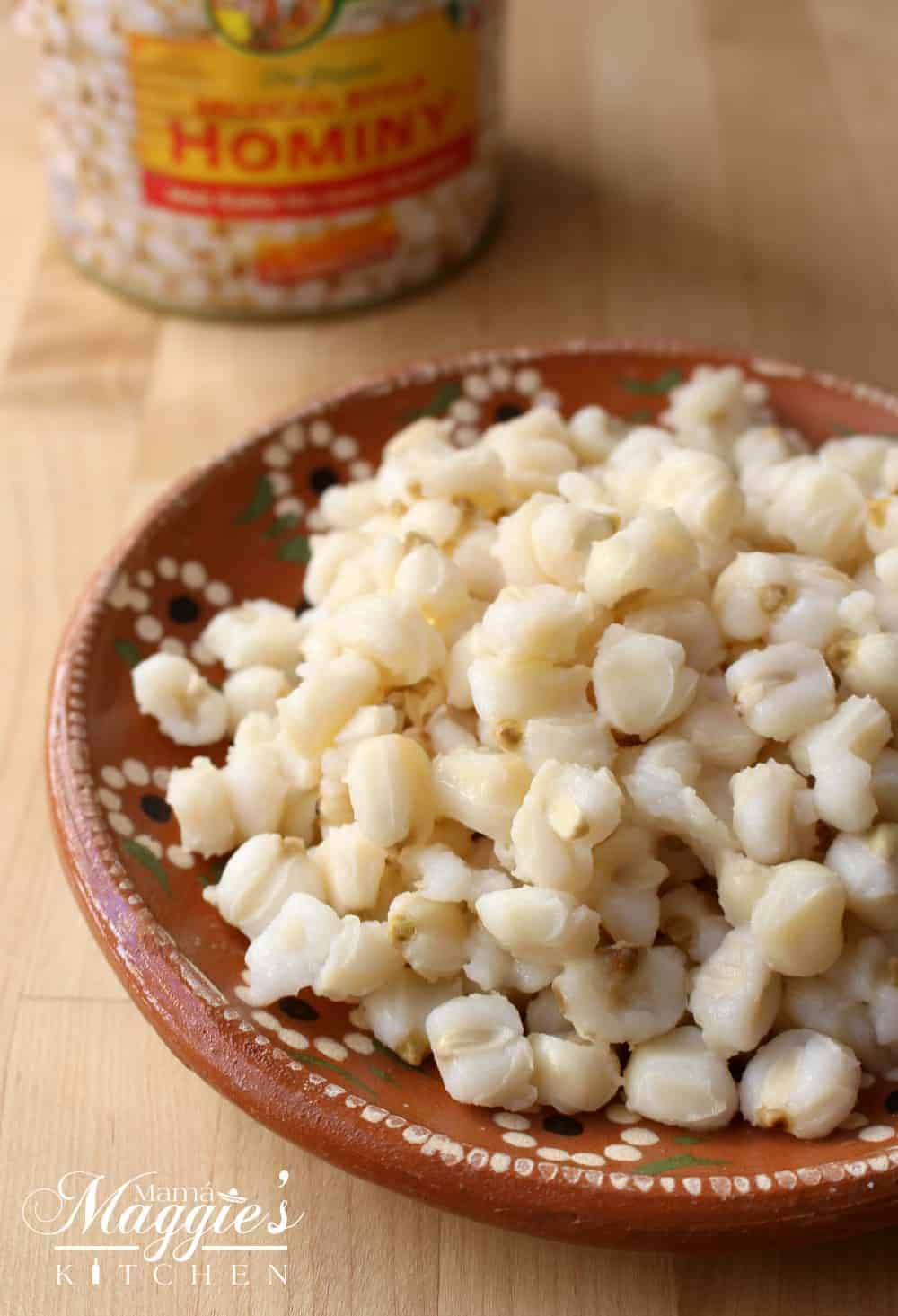
Table of Contents
WHAT IS HOMINY?
Is it possible to sing in three-part hominy? No, silly. That’s harmony! Sure, that joke was pretty corny but so is hominy. 🙂
The word “hominy” comes from the Powhattan Indian term for prepared maize – “Chickahominy.” Where, you may ask, did hominy originate?
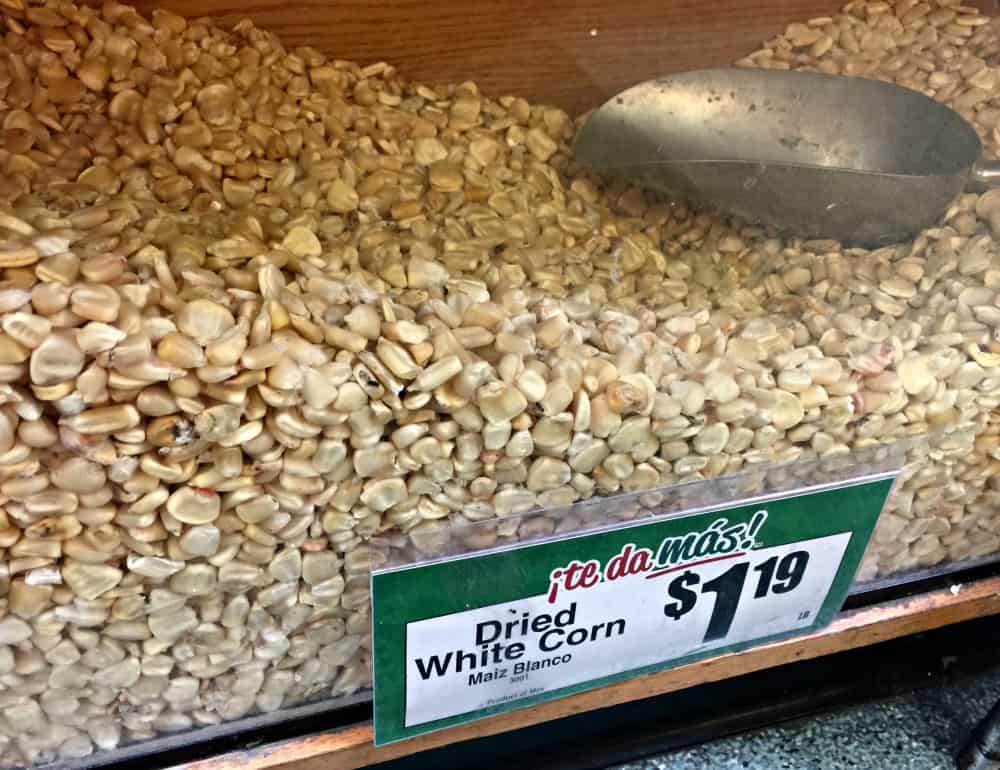
Well… Once upon a time, there was a little pile of dried maize:
Back around 1500 to 1200 B.C., in the area of what is now Southern Mexico and Guatemala, the Meso-Americans discovered they could boost the nutritional value of corn with the process of soaking it in an alkaline solution.
This process is called Nixtamalization. Every time you bite into a warm corn tortilla you’re benefiting from this ancient chemical process.
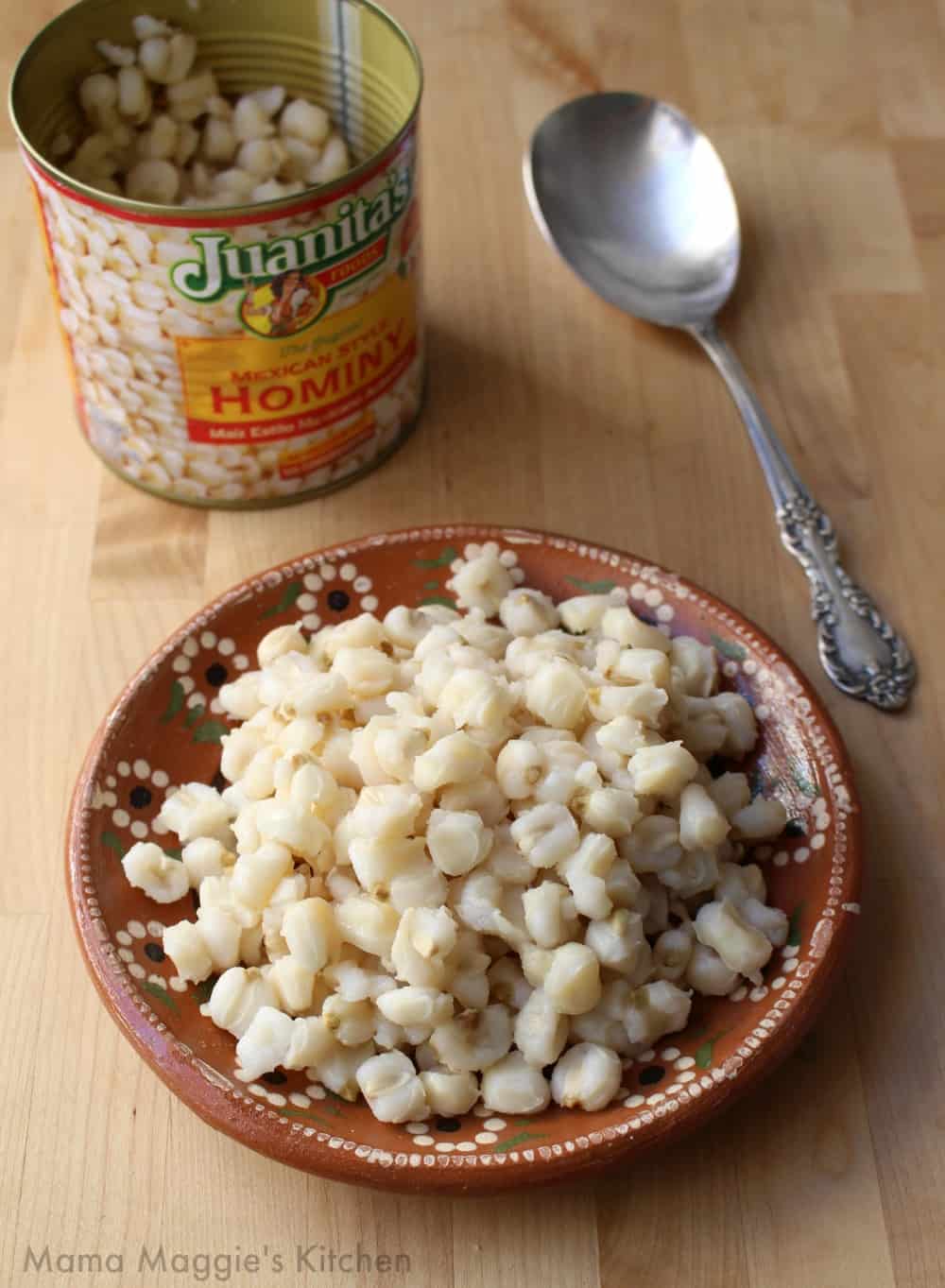
What is this process?
- First of all, the hard, dry grain is cooked in a dilute solution of lye (sodium hydroxide) or calcium hydroxide (from limestone).
- Afterward, the maize is thoroughly washed to remove the bitter taste of the lye or lime (the rock, not the fruit). No limones were harmed in the production of your hominy. 🙂
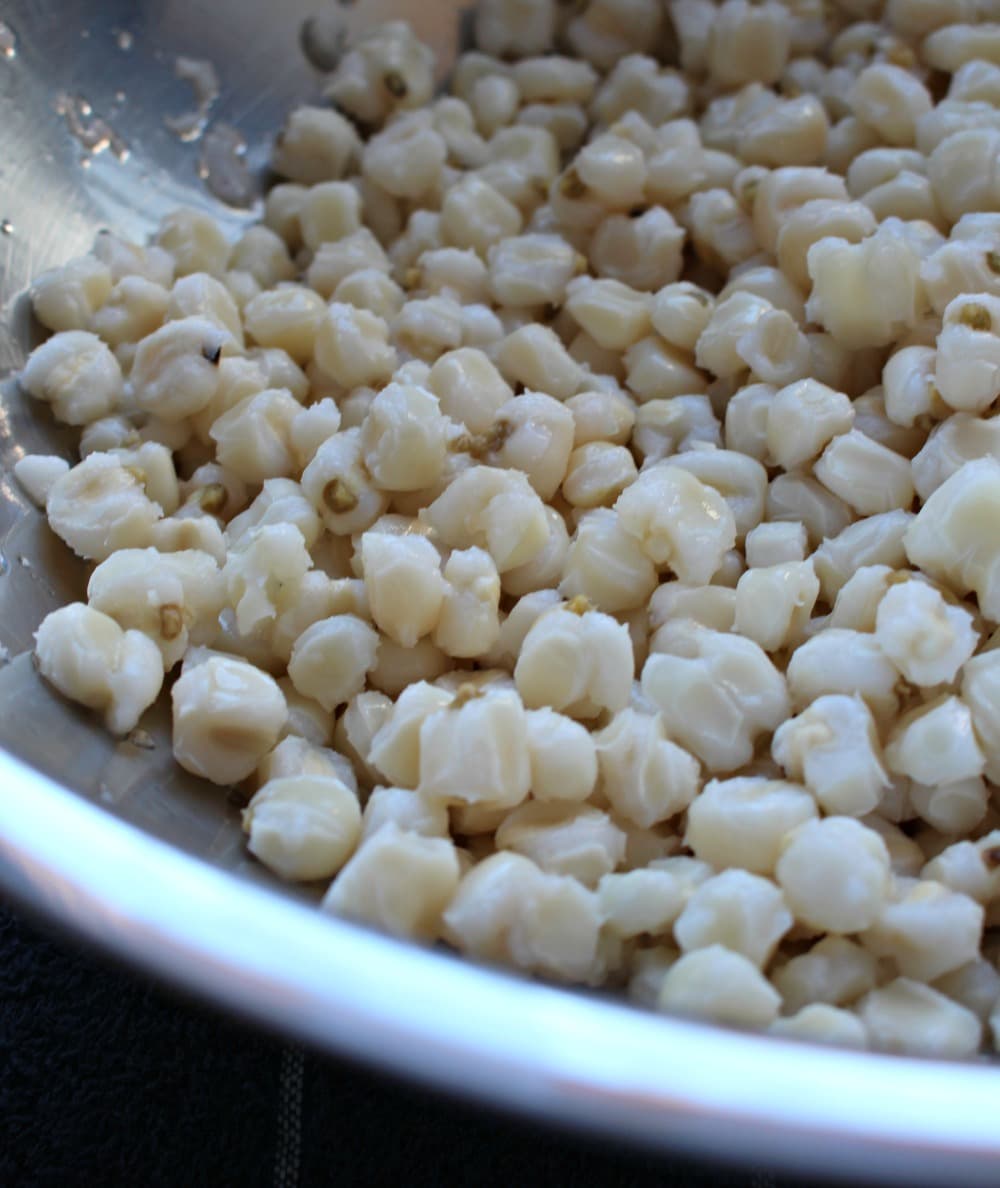
How to Make Homemade Hominy
- Simply mix a small amount of this pickling lime powder in water to create the right solution.
- You’ll then have to soak your dried corn kernels overnight in the calcium hydroxide fluid to loosen up the outer layer skin. This will make it far easier to grind it into flour and it also improves the taste.
- Once you’ve soaked your corn, drain and rinse your kernels to get rid of that unpalatable lime flavor and vigorously rub them between your hands to remove the skins.
- Your fully-rinsed alkalinized corn is now nixtamal. You’ll finish off the whole process by cooking your kernels until they are fully heated.
For you do-it-yourselfers, if you choose to, you can actually make your own hominy in the privacy of your own home using “pickling lime” or “Cal.”

Now, I know that most of you are far too busy to make your own hominy from scratch and the good news is that it is readily available in its canned form all throughout Mexico and the U.S.
It’s already fully cooked and all you need to do is rinse it, heat it, and eat it.
Note: In Mexican cooking, hominy is used to make Masa for Tamales, Champurrado, Gorditas, huaraches recipe, and more!
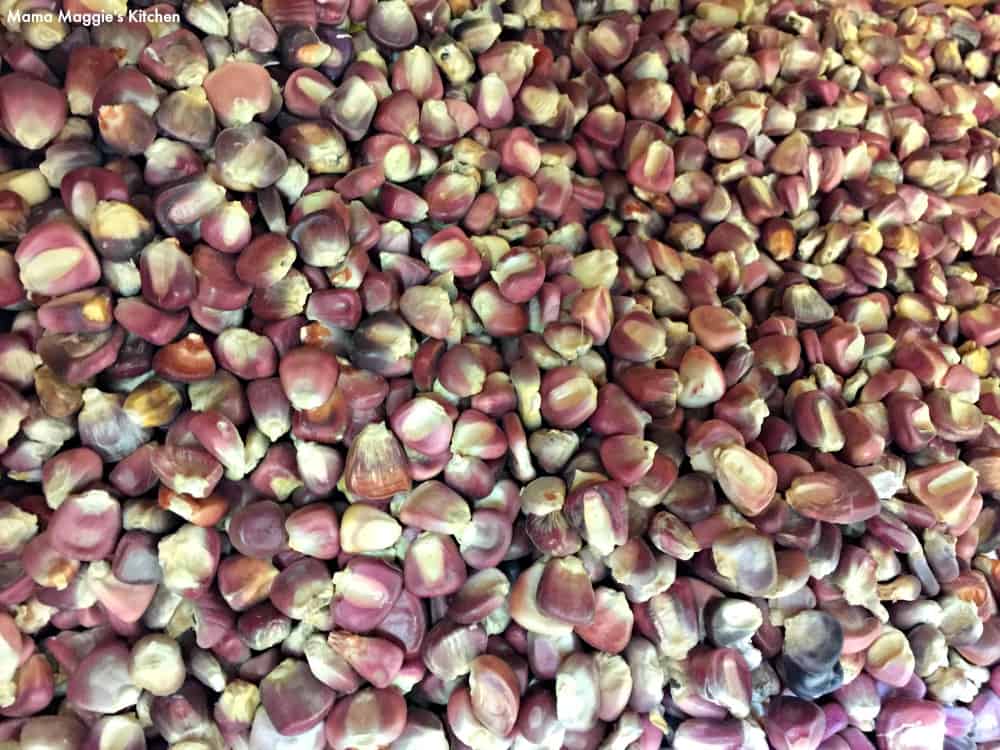
Dried hominy can also be easily found in Hispanic markets and in some large chain grocery stores.
Some people prefer to cook dried hominy because they feel that it has an improved flavor over its canned cousin.
Think of it as being very similar to cooking your own Frijoles de la Olla versus using canned beans.
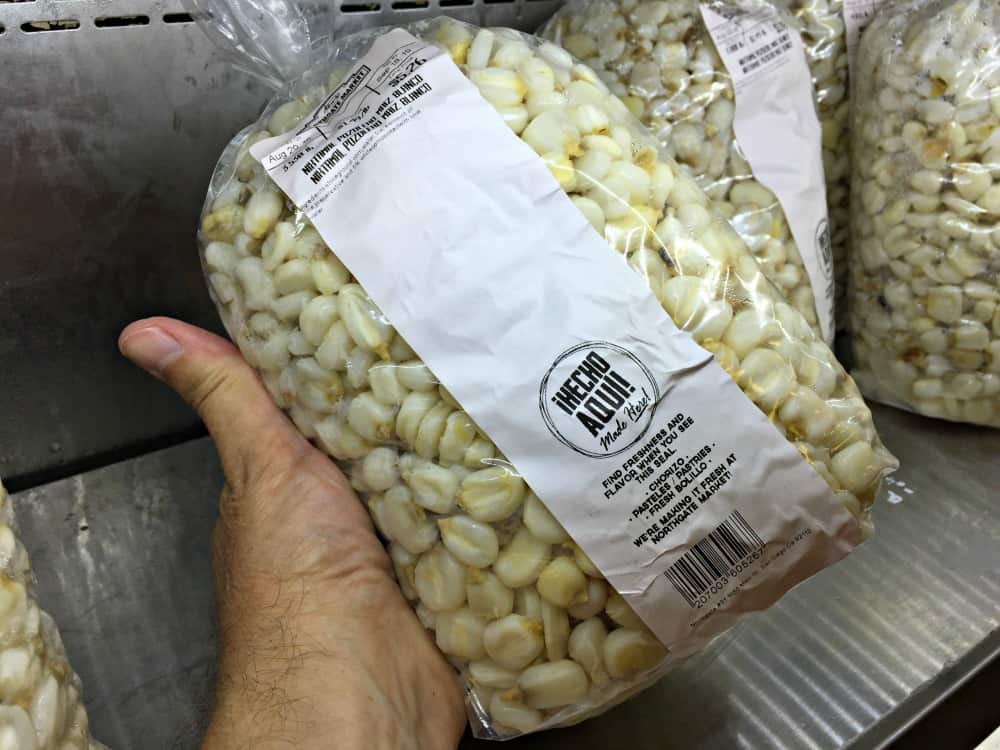
Where to Find Fresh Hominy?
I’ve only seen fresh hominy at Mexican markets. This bag of fresh “Nixtamal Pozolero Maiz Blanco” (also known as hominy) was next to the prepared masa.
Benefits of nixtamalization
The process prevents the grains from sprouting while in storage and, most importantly, releases the additional nutrition of the B-Vitamin niacin which is super important for preventing nutritional deficiency diseases.
People consume hominy in several forms – full kernels, as coarsely-ground particles (aka “hominy grits”), and as flour.
Recipes Using Hominy
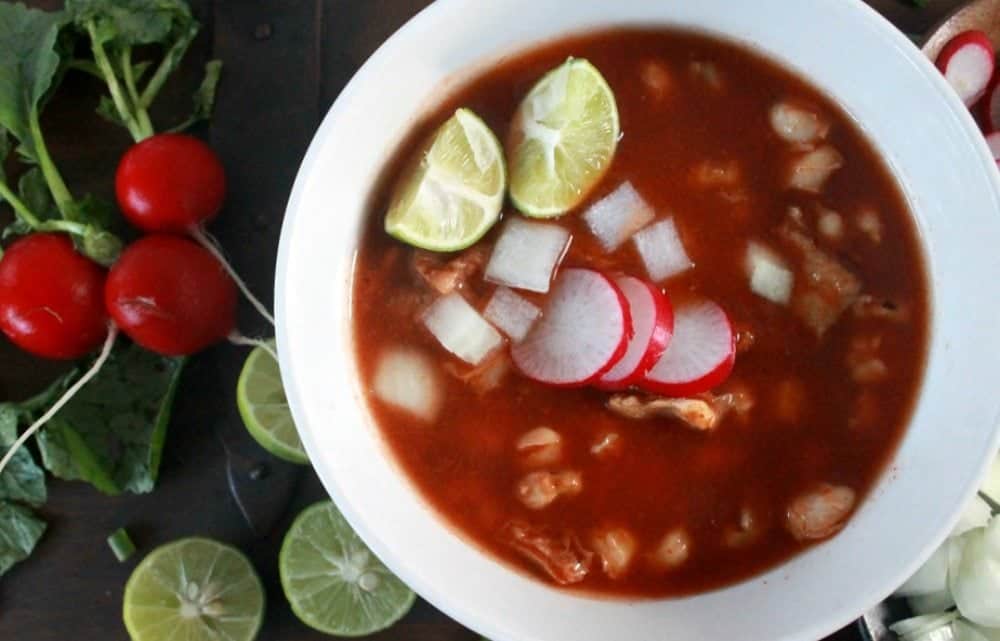
Probably the most famous Mexican recipe using hominy is pozole. You might also see it spelled “posole.” This is Pozole Rojo, a classic hearty Mexican soup. Full of bold flavors and absolutely delicious.
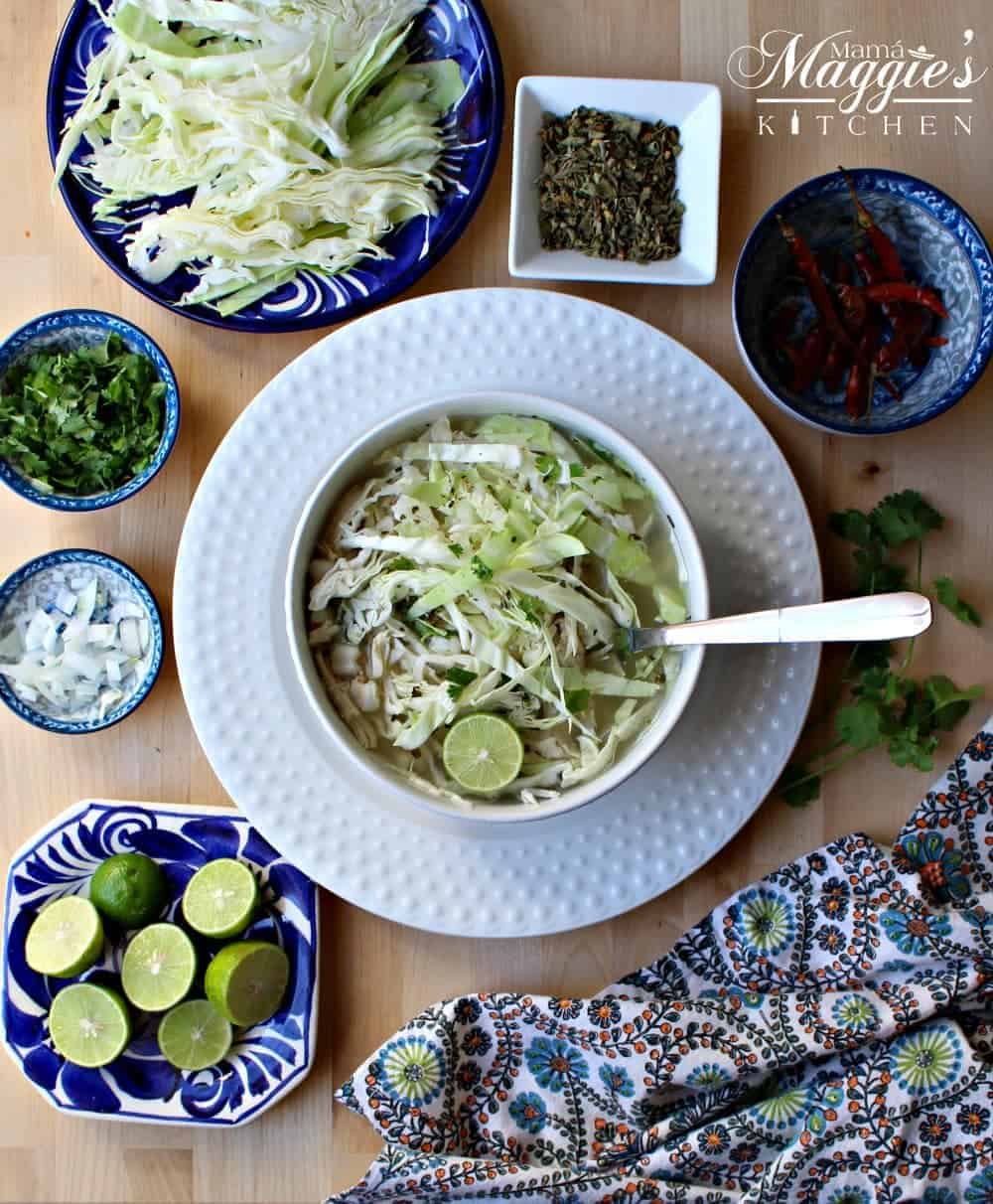
There is also Pozole Blanco. The hominy creates that tummy-filling satisfaction of Mexican comfort food. Typical of the cooler months and often enjoyed with Ponche Navideño.
Congratulations! You now know more about hominy than most of your friends and family. Be sure to hit me up with any questions or comments you may have about hominy and any of the recipes that you have tried.
Follow me on Facebook, Instagram, Pinterest, Twitter.

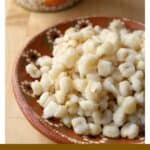

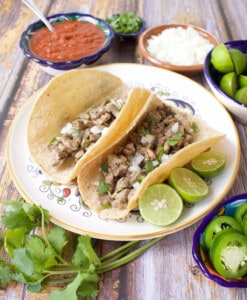

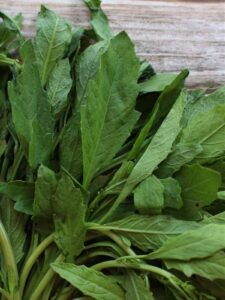
Removing the hard outer cover of the hominy. Is that necessary. I cooked the dried hominy until it was nice and tender but still has the hard outer shell. Removed some of those , not bad but would like to remove them. From dried does seem to taste better
From dried, they taste SO much better. Unfortunately, it’s a labor of love and time. Hominy is best fresh, and if you can find a Mexican market, they might sell fresh hominy with the outer skin removed.
I think it tastes the same as what we have here in Philippines, we called ” binatog ”, it has a slightly milky flavor, maybe because the corn is white, we mix it with grated coconut meat and a pinch of salt. It tastes so great, I swear..😘
I love trying new ingredients! I’ll have to broaden my horizons a bit and add hominy to the mix.
Mmm! I love hominy and pozole! Your pix look so good! Interesting ready about hominy!
I have never heard of hominy before, what an interesting concept that I’ve never even heard of it. What fun it was to learn more, glad you shared this today. I love learning about new food options and things in general.
It sounds so interesting, I’ll have to try it, I also loved learning more about Mexican cuisine